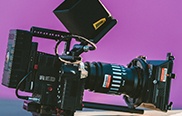In 2024, companies of all kinds are looking for new ways to develop positive associations with their brand.
With more competition than ever, it’s becoming increasingly difficult to make your business stand out from the rest.
In this article, we’ll take a look at the basics of sonic branding and why it’s so important to brand development in 2024.
Whether it’s a jingle or top voice actor, the way your company sounds can have a huge impact on brand image.
Even smaller companies should be investing in sound design to influence the way their brand is perceived by the target audience.
What Is Sonic Branding?
In short, “sonic branding” refers to the distinctive sound profile that audiences associate with your brand.
This could include everything from voice actors to jingles and ringtones.
The McDonald’s “I’m Lovin’ It” jingle, for example, is one of the most well-known brand symbols around the world.
How Does Sonic Branding Work?
Branding involves two basic elements.
First, you need consumers to recognize that your brand exists.
From there, you have to build a positive, memorable impression.
Strong branding depends on a clear, cohesive image that stays consistent across different interactions.
Even without the words, most consumers will immediately recognize the “I’m Lovin’ It” jingle and think of McDonald’s.
This is a sign of the company’s ability to achieve brand recognition through sound as well as visuals.
Effective sonic branding leads to a number of positive outcomes including revenue and brand loyalty.
At the same time, the McDonald’s brand is far more than just a jingle or catchphrase.
Everything from the color scheme and golden arches to the product names and mobile app affects how customers see McDonald’s.
Sound is one of many crucial elements of this general brand image.
It goes without saying that McDonald’s has far more resources than almost any other business.
Still, you can apply many of the same concepts to your company’s sonic branding.
Sonic Branding Examples
Once you understand the concept of sonic branding, you’ll start to recognize it in many different contexts.
Let’s take a look at some of the most effective examples of sonic branding.
1. Super Mario
Mario has been one of the most popular video game characters since the release of Super Mario Bros. in 1985 (1987 in the US).
The coin sound effect has been around for even longer, starting with the original 1983 Mario Bros.
This sound plays when the player starts the game, collects a coin, or takes other specific actions.
While the sound design has changed slightly over the years, Nintendo has made a point to keep the coin sound in virtually every Mario-related game.
This is an instantly recognizable sign of the Nintendo brand for many gamers.
Like McDonald’s, Nintendo has been willing to adjust the sound without losing its core quality.
Recent games include a much more resonant version of the same classic effect.
Just like Mario himself, the coin sound has been a changing yet constant symbol of Nintendo for nearly 40 years.
2. Pixar
Production companies often place animations or jingles at the beginning of shows, movies, and video games to increase brand recognition.
Pixar is one of the best examples, with the iconic lamp moving across the screen and taking the place of the “I” in the company’s name.
As we saw with McDonald’s and Mario, one of the key elements of Pixar’s success is the alignment of all branding elements.
The animation, sound effects, and overall style of Pixar’s movies all combine to create a consistent impression.
That’s part of what makes Pixar so much more distinctive than many other production companies.
3. Macintosh
Apple’s startup chime is another distinctive sound for consumers around the world.
Once again, it has been subtly tweaked over the years for a more sleek and modern impression.
You can see the balance between consistency and innovation through each successive iteration.
Note that every single example is remarkably simple.
You might think that a more complex sound will be more distinctive, but the opposite is more likely to be true.
The best marketing is straightforward enough for audiences to recognize and understand quickly.
Apple’s startup sound strikes a good balance — it’s sleek and futuristic while also being warm and welcoming.
All four of McDonald’s, Nintendo, Pixar, and Macintosh have spent years developing positive, relaxing sounds that match the impression they want to give their audience.
4. Pure Michigan
Finally, this last example is about voice acting rather than basic sound effects.
While travel commercials can come off as generic or unrealistic, Michigan took the unique approach of bringing in a celebrity to promote state tourism.
Tim Allen helped make Pure Michigan one of the most successful tourism campaigns in recent memory, with ads starting in 2008 and running until 2019.
By focusing on the narrative of exploration rather than landmarks or places of interest, the Pure Michigan campaign differentiated itself from a typical state travel ad.
Hiring celebrity voice actors isn’t realistic for every company, but it’s important to find voice actors who can effectively represent your brand.
Here at Voice Crafters, we work with an incredible group of advertising voice actors who speak many different languages and bring unique experiences to the table.
5. THX
Like Pixar, THX used sonic branding to create a distinctive intro that viewers associate with the company’s media.
Since THX itself helps produce high-quality audiovisual experiences, sonic branding was particularly important for their image.
Even today, the THX sound is one of the most recognizable sonic brands for many Americans.
While Pixar’s sound effects are playful and lighthearted, the THX intro gives a stronger and more forceful impression.
It’s clearly designed to recall a powerful sound system that maximizes immersion and goes beyond typical TV or computer speakers.
Final Thoughts
Most marketers are already thinking about how to develop a distinctive brand, but they may not recognize the role of sound in this process.
Sonic branding will give you yet another way to generate positive impressions and associations within your target audience.
At this point, you should be ready to start curating your sound profile in order to create a more cohesive brand across all forms of media.
Check out our team of corporate voice actors to start looking for a professional who matches up with your ideal brand image.









2 Comments
Thanks for this! I don’t know if you’re aware, but I have a whole podcast about this very subject (and about how sound influences our lives in general) called Audio Branding. 🙂 It’s definitely important – and something that really helps a company reach its intended audience on a deeper level. (It’s great for recognition and memory too!) A voice actor can certainly be a useful part of that sonic brand.
Hey Jodi, Yes I do know about the podcast! Could you please put a link to it here for our readers?